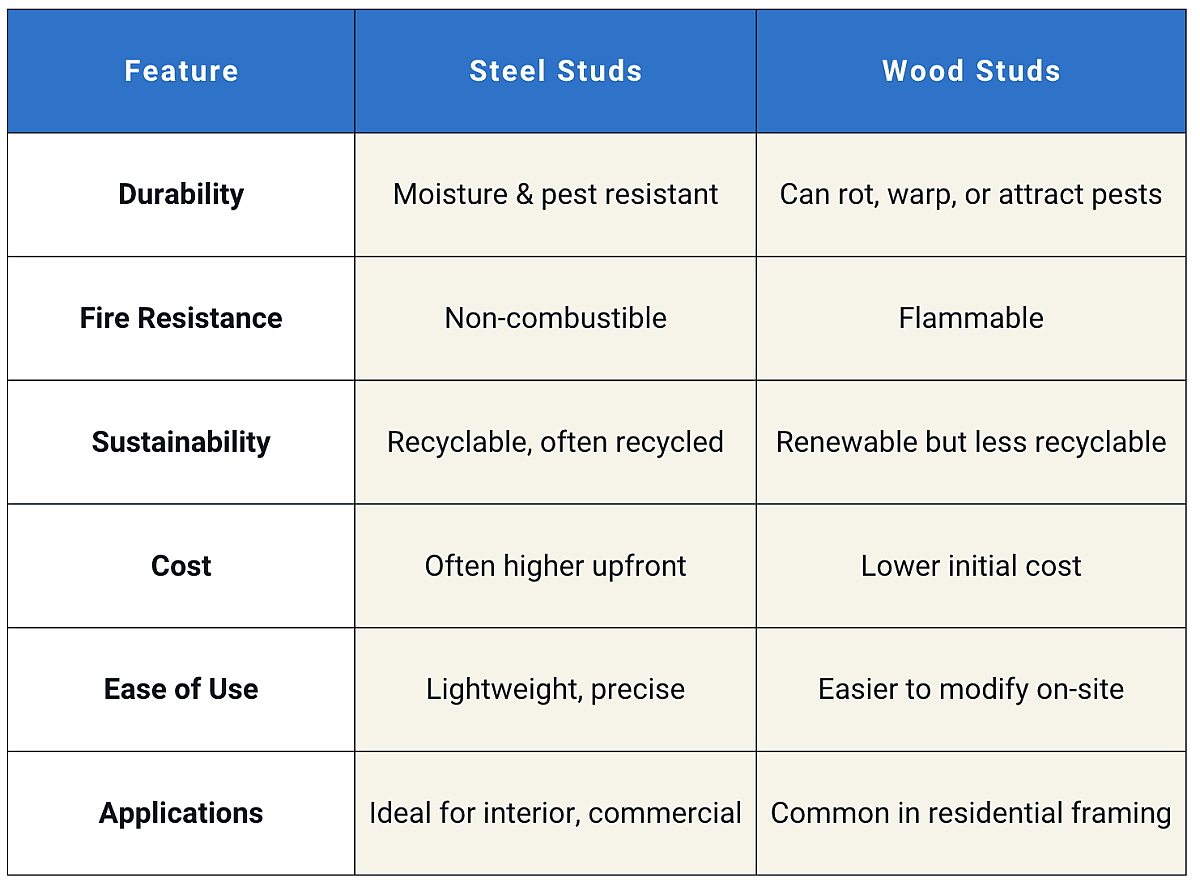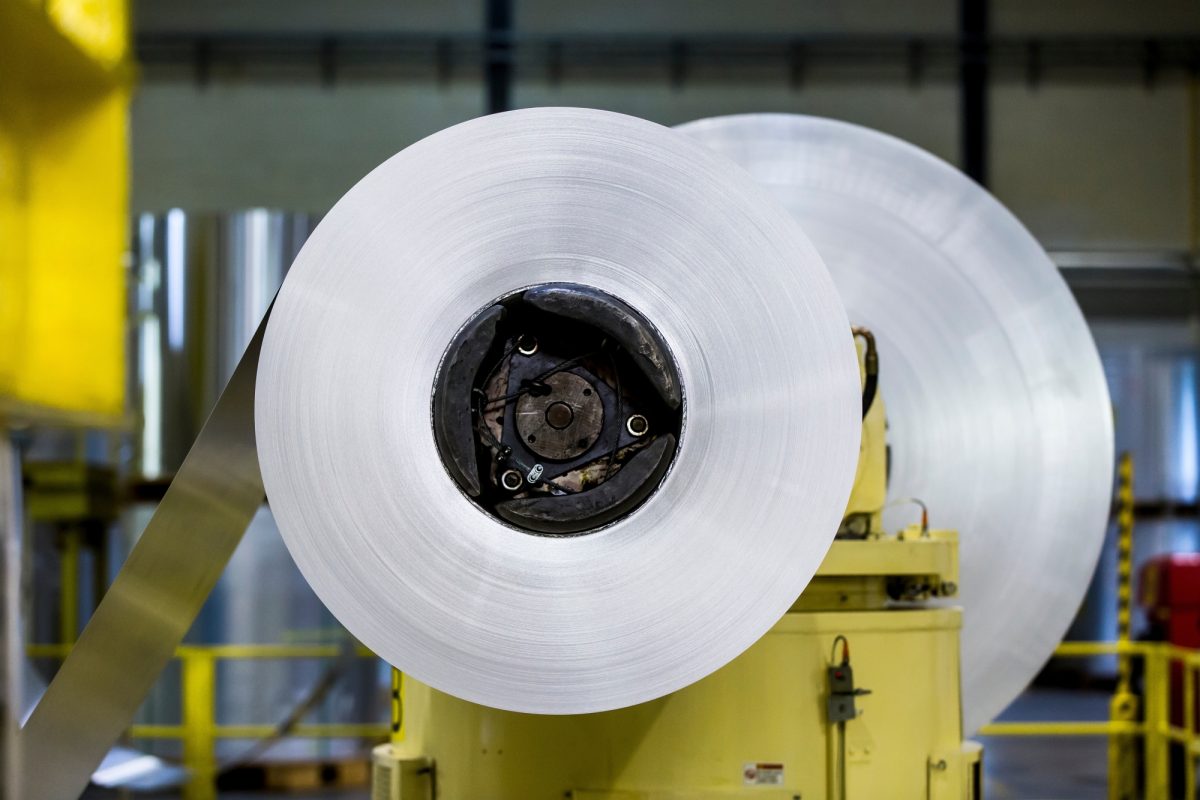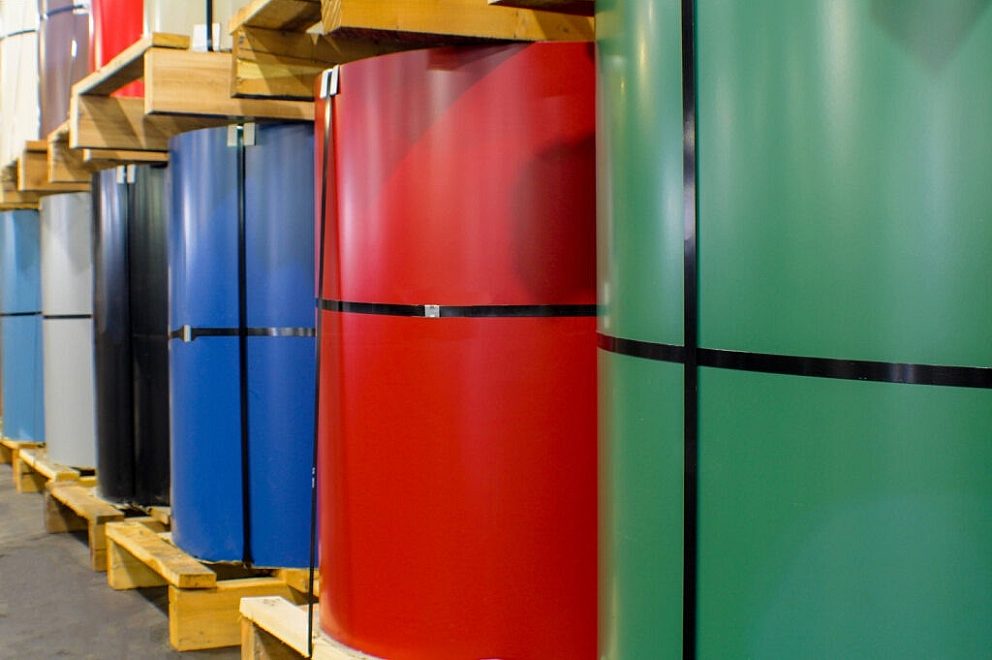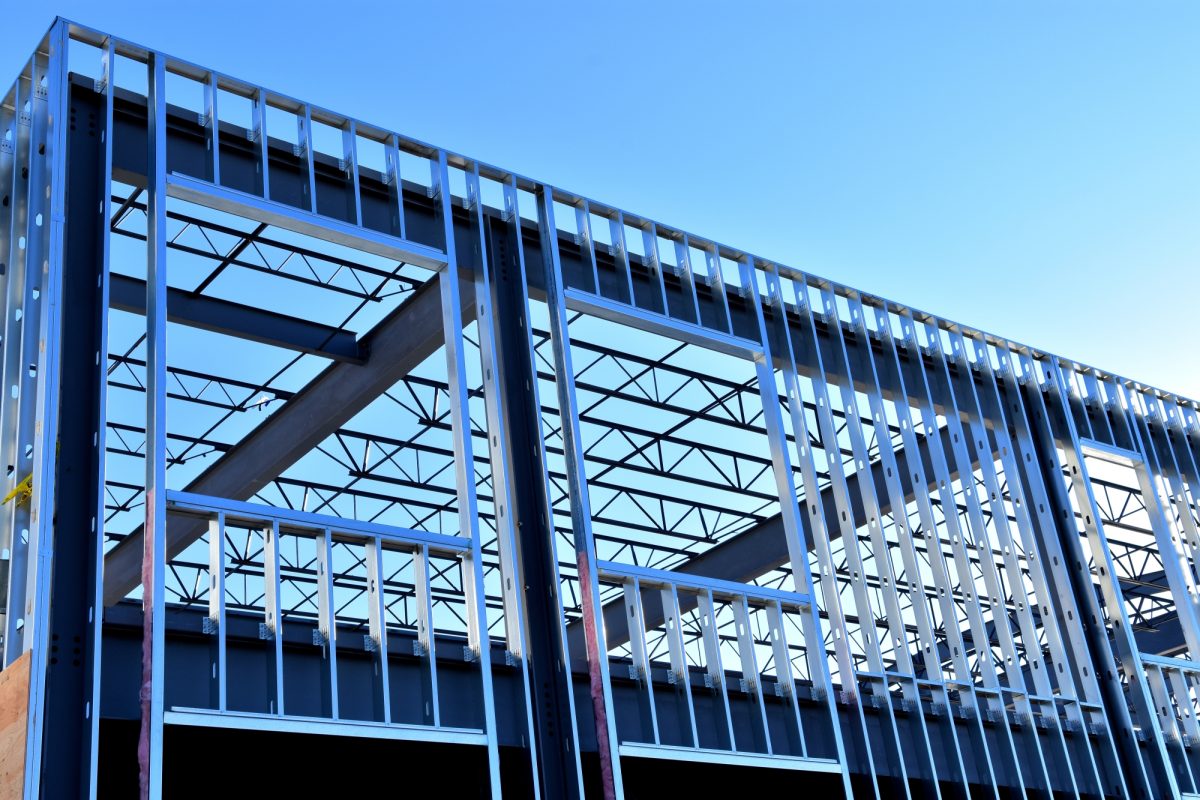Steel Studs vs. Wood Studs: Pros, Cons, and When to Use Each

Are steel studs better than wood for framing? It depends on your specific application, budget, and performance goals. In this post, we’ll break down the key differences between metal vs. wood studs and explore the advantages of steel framing.
The Basics: What Are Metal and Wood Studs?
Wood studs, usually made from dimensional lumber like 2x4s, have been the traditional choice for residential construction for decades. They’re easy to work with, widely available, and well understood in the building trades.
Metal studs, also known as steel studs, are typically made from cold-formed galvanized steel. They’re most common in commercial projects but are increasingly used in residential framing as well, especially for interior non-load-bearing walls.
Advantages of Steel Framing
If you’re weighing metal studs vs. wood studs, steel framing has some clear advantages, especially in certain environments and building types:
1. Durability and Strength
Steel studs don’t warp, crack, or split over time. They’re resistant to moisture, mold, and pests, making them ideal for basements, bathrooms, and any area with high humidity.
2. Fire Resistance
Steel is non-combustible, which can improve the fire safety of a structure. In many commercial and multifamily projects, this makes steel framing the go-to option.
3. Sustainability
Steel studs are made from recycled materials and can be recycled again at the end of a building’s life cycle. This makes them an environmentally responsible choice for many builders.
4. Lightweight and Easy to Handle
Despite their strength, metal studs are lightweight and easy to transport. They’re also uniform in size, so you won’t have to worry about bows or knots like you might with wood.
When Wood Studs Still Make Sense
That said, wood studs still offer several benefits in the right context:
1. Cost-Effective for Smaller Projects
For small residential builds or remodels, wood is typically more affordable upfront, especially when lumber prices are stable.
2. Ease of Modification
Wood is easier to cut and drill on-site with standard tools. You can also fasten things directly into wood without special anchors or fasteners.
3. Better for Load-Bearing Walls (in Some Cases)
Depending on your design and load requirements, wood may still be the preferred material for exterior or structural framing – though advanced steel framing systems are closing that gap quickly.
Metal vs. Wood Studs: A Quick Comparison

When to Use Steel Studs
Steel studs are a smart choice when:
- You’re building in areas prone to moisture or pests
- You need superior fire resistance
- You’re working on a large-scale commercial or multifamily project
- You want a consistent, low-maintenance framing material
When to Use Wood Studs
Stick with wood studs if:
- You’re tackling a small-scale home renovation or addition
- Your project has a tight budget and limited exposure to moisture
- You prefer traditional framing methods and tools
The Bottom Line
The best material for the job really depends on your priorities. Steel offers clear benefits in terms of durability, fire resistance, and sustainability. Wood still has its place for cost-sensitive, smaller-scale builds.
At Mill Steel, we supply high-quality, code compliant and Steel Framing Industry Association certified metal framing products. Contact us today for your next project needs.


